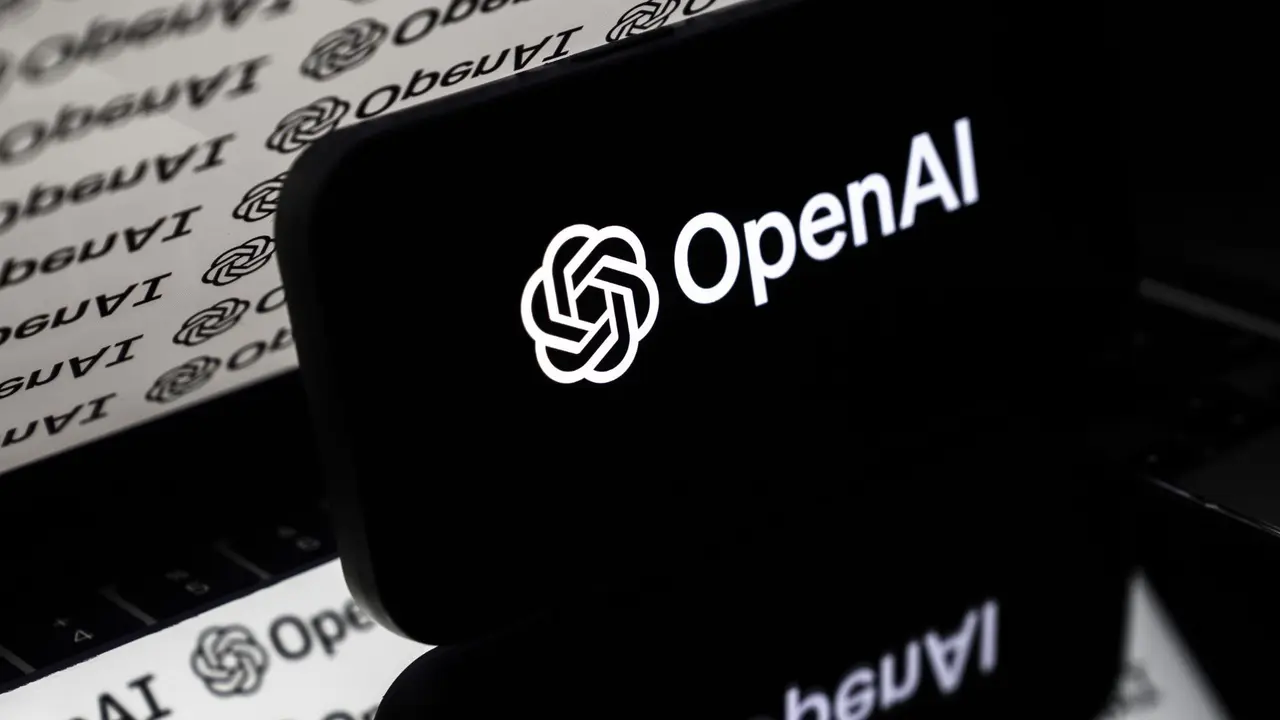Fortinet Report Reveals Record Surge in AI-Powered and Automated Cyberattacks
2 Sources
2 Sources
[1]
Fortinet Report Warns of Record Surge in AI-Powered Cyberattacks
Fortinet announced the release of the 2025 Global Threat Landscape Report from FortiGuard Labs. The latest annual report is a snapshot of the active threat landscape and trends from 2024, Fortinet announced the release of the 2025 Global Threat Landscape Report from FortiGuard Labs. The latest annual report is a snapshot of the active threat landscape and trends from 2024, including a comprehensive analysis across all tactics used in cyberattacks, as outlined in the MITRE ATT&CK framework. The data reveals that threat actors are increasingly harnessing automation, commoditized tools, and AI to systematically erode the traditional advantages held by defenders.
[2]
Fortinet Threat Report Reveals Record Surge in Automated Cyberattacks as Adversaries Weaponize AI and Fresh Techniques
FortiGuard Labs 2025 Global Threat Landscape Report highlights a boom in Cybercrime-as-a-Service on the darknet, fueling a lucrative market for credentials, exploits, and access Fortinet® (NASDAQ: FTNT), the global cybersecurity leader driving the convergence of networking and security, today announced the release of the 2025 Global Threat Landscape Report from FortiGuard Labs. The latest annual report is a snapshot of the active threat landscape and trends from 2024, including a comprehensive analysis across all tactics used in cyberattacks, as outlined in the MITRE ATT&CK framework. The data reveals that threat actors are increasingly harnessing automation, commoditized tools, and AI to systematically erode the traditional advantages held by defenders. "Our latest Global Threat Landscape Report makes one thing clear: Cybercriminals are accelerating their efforts, using AI and automation to operate at unprecedented speed and scale," said Derek Manky, Chief Security Strategist and Global VP Threat Intelligence, Fortinet FortiGuard Labs. "The traditional security playbook is no longer enough. Organizations must shift to a proactive, intelligence-led defense strategy powered by AI, zero trust, and continuous threat exposure management to stay ahead of today's rapidly evolving threat landscape." Key findings from the latest FortiGuard Labs Global Threat Landscape Report include: Automated scanning hits record highs as attackers shift left to identify exposed targets early. To capitalize on newfound vulnerabilities, cybercriminals are deploying automated scanning at a global scale. Active scanning in cyberspace reached unprecedented levels in 2024, rising by 16.7% worldwide year-over-year, highlighting a sophisticated and massive collection of information on exposed digital infrastructure. FortiGuard Labs observed billions of scans each month, equating to 36,000 scans per second, revealing an intensified focus on mapping exposed services such as SIP and RDP and OT/IoT protocols like Modbus TCP. Darknet marketplaces fuel easy access to neatly packaged exploit kits. In 2024, cybercriminal forums increasingly operated as sophisticated marketplaces for exploit kits, with over 40,000 new vulnerabilities added to the National Vulnerability Database, a 39% rise from 2023. In addition to zero-day vulnerabilities circulating on the darknet, initial access brokers are increasingly offering corporate credentials (20%), RDP access (19%), admin panels (13%), and web shells (12%). Additionally, FortiGuard Labs observed a 500% increase in the past year in logs available from systems compromised by infostealer malware, with 1.7 billion stolen credential records shared in these underground forums. AI-powered cybercrime is scaling rapidly. Threat actors are harnessing AI to enhance phishing realism and evading traditional security controls, making cyberattacks more effective and difficult to detect. Tools like FraudGPT, BlackmailerV3, and ElevenLabs are fueling more scalable, believable, and effective campaigns, without the ethical restrictions of publicly available AI tools. Targeted attacks on critical sectors intensify. Industries such as manufacturing, healthcare, and financial services continue to experience a surge in tailored cyberattacks, with adversaries deploying sector-specific exploitations. In 2024, the most targeted sectors were manufacturing (17%), business services (11%), construction (9%), and retail (9%). Both nation-state actors and Ransomware-as-a-Service (RaaS) operators concentrated their efforts on these verticals, with the United States bearing the brunt of attacks (61%), followed by the United Kingdom (6%) and Canada (5%). Cloud and IoT security risks escalate. Cloud environments continue to be a top target, with adversaries exploiting persistent weaknesses such as open storage buckets, over-permissioned identities, and misconfigured services. In 70% of observed incidents, attackers gained access through logins from unfamiliar geographies, highlighting the critical role of identity monitoring in cloud defense. Credentials are the currency of cybercrime. In 2024, cybercriminals shared over 100 billion compromised records on underground forums, a 42% year-over-year spike, driven largely by the rise of "combo lists" containing stolen usernames, passwords, and email addresses. More than half of darknet posts involved leaked databases, enabling attackers to automate credential-stuffing attacks at scale. Well-known groups like BestCombo, BloddyMery, and ValidMail were the most active cybercriminal groups during this time and continue to lower the barrier to entry by packaging and validating these credentials, fueling a surge in account takeovers, financial fraud, and corporate espionage. CISO Takeaway: Strengthening Cyber Defenses Against Emerging Threats Fortinet's Global Threat Landscape Report provides rich details on the latest attacker tactics and techniques while also delivering prescriptive recommendations and actionable insights. Designed to empower CISOs and security teams, the report offers strategies to counter threat actors before they strike, helping organizations stay ahead of emerging cyberthreats. This year's report includes a "CISO Playbook for Adversary Defense" that highlights a few strategic areas to focus on: Shifting from traditional threat detection to continuous threat exposure management: This proactive approach emphasizes continuous attack surface management, real-world emulation of adversary behavior, risk-based remediation prioritization, and automation of detection and defense responses. Utilizing breach and attack simulation (BAS) tools to regularly assess endpoint, network, and cloud defenses against real-world attack scenarios ensures resilience against lateral movement and exploitation. Simulating real-world attacks: Conduct adversary emulation exercises, red and purple teaming, and leverage MITRE ATT&CK to test defenses against threats like ransomware and espionage campaigns. Reducing attack surface exposure: Deploy attack surface management (ASM) tools to detect exposed assets, leaked credentials, and exploitable vulnerabilities while continuously monitoring darknet forums for emerging threats. Prioritizing high-risk vulnerabilities: Focus remediation efforts on vulnerabilities actively discussed by cybercrime groups, leveraging risk-based prioritization frameworks such as EPSS and CVSS for effective patch management. Leveraging dark web intelligence: Monitor darknet marketplaces for emerging ransomware services and track hacktivist coordination efforts to preemptively mitigate threats like DDoS and web defacement attacks. Discover how FortiGuard Labs Advisory Services combine cutting-edge technology and expert services to help organizations strengthen their security posture before threats emerge. In the event of an incident, FortiGuard Labs offers swift, effective response and in-depth forensic analysis to minimize impact and prevent future intrusions, delivering comprehensive protection in today's increasingly volatile digital landscape. Additional Resources Download a copy of the 2025 Global Threat Landscape Report from FortiGuard Labs. Learn more about FortiGuard Labs threat intelligence and research and outbreak alerts, which provide timely steps to mitigate breaking cybersecurity attacks. Learn about FortiAI and Fortinet's AI-driven innovations. Read more about the Fortinet Security Fabric, which brings end-to-end security to organizations of all sizes to prevent ransomware across all points of entry. Visit com/trust to learn about Fortinet innovation, collaboration partners, product security processes, and enterprise-grade products. Read about how Fortinet customers are securing their organizations. Learn about Fortinet's commitment to product security and integrity, including its responsible product development and vulnerability disclosure approach and policies. Follow Fortinet on X, LinkedIn, Facebook, and Instagram. Subscribe to Fortinet on our blog or YouTube. About Fortinet Fortinet (Nasdaq: FTNT) is a driving force in the evolution of cybersecurity and the convergence of networking and security. Our mission is to secure people, devices, and data everywhere, and today we deliver cybersecurity everywhere our customers need it with the largest integrated portfolio of over 50 enterprise-grade products. Well over half a million customers trust Fortinet's solutions, which are among the most deployed, most patented, and most validated in the industry. The Fortinet Training Institute, one of the largest and broadest training programs in the industry, is dedicated to making cybersecurity training and new career opportunities available to everyone. Collaboration with esteemed organizations from both the public and private sectors, including Computer Emergency Response Teams ("CERTS"), government entities, and academia, is a fundamental aspect of Fortinet's commitment to enhance cyber resilience globally. FortiGuard Labs, Fortinet's elite threat intelligence and research organization, develops and utilizes leading-edge machine learning and AI technologies to provide customers with timely and consistently top-rated protection and actionable threat intelligence. Learn more at https://www.fortinet.com, the Fortinet Blog, and FortiGuard Labs.
Share
Share
Copy Link
Fortinet's 2025 Global Threat Landscape Report highlights a significant increase in AI-powered and automated cyberattacks, with threat actors leveraging advanced tools to erode traditional defense advantages.

AI-Powered Cyberattacks on the Rise
Fortinet's 2025 Global Threat Landscape Report, released by FortiGuard Labs, reveals a significant surge in AI-powered and automated cyberattacks. The report, which provides a comprehensive analysis of the active threat landscape and trends from 2024, highlights how threat actors are increasingly leveraging automation, commoditized tools, and artificial intelligence to undermine traditional defense strategies
1
.Derek Manky, Chief Security Strategist and Global VP Threat Intelligence at Fortinet FortiGuard Labs, emphasized the need for a shift in cybersecurity strategies: "Organizations must shift to a proactive, intelligence-led defense strategy powered by AI, zero trust, and continuous threat exposure management to stay ahead of today's rapidly evolving threat landscape"
2
.Key Findings and Trends
The report highlights several alarming trends in the cybersecurity landscape:
-
Record-High Automated Scanning: Active scanning in cyberspace reached unprecedented levels in 2024, rising by 16% worldwide year-over-year. FortiGuard Labs observed billions of scans each month, equating to 36,000 scans per second
2
. -
Thriving Darknet Marketplaces: Cybercriminal forums are increasingly operating as sophisticated marketplaces for exploit kits. Over 40,000 new vulnerabilities were added to the National Vulnerability Database in 2024, marking a 39% increase from 2023
2
. -
AI-Enhanced Cybercrime: Threat actors are harnessing AI to improve phishing realism and evade traditional security controls. Tools like FraudGPT, BlackmailerV3, and ElevenLabs are being used to create more scalable and effective campaigns
2
. -
Targeted Attacks on Critical Sectors: Industries such as manufacturing (17%), business services (11%), construction (9%), and retail (9%) experienced a surge in tailored cyberattacks
2
. -
Escalating Cloud and IoT Security Risks: Cloud environments continue to be prime targets, with attackers exploiting persistent weaknesses such as open storage buckets and misconfigured services
2
.
The Currency of Cybercrime: Credentials
In 2024, cybercriminals shared over 100 billion compromised records on underground forums, representing a 42% year-over-year increase. This surge was largely driven by the rise of "combo lists" containing stolen usernames, passwords, and email addresses. More than half of darknet posts involved leaked databases, enabling attackers to automate credential-stuffing attacks at scale
2
.Related Stories
CISO Recommendations
The report provides strategic recommendations for Chief Information Security Officers (CISOs) and security teams:
-
Shift to Continuous Threat Exposure Management: Emphasize proactive approaches such as continuous attack surface management, real-world emulation of adversary behavior, and risk-based remediation prioritization
2
. -
Utilize Breach and Attack Simulation (BAS) Tools: Regularly assess endpoint, network, and cloud defenses against real-world attack scenarios to ensure resilience against lateral movement and exploitation
2
.
As the cybersecurity landscape continues to evolve rapidly, organizations must adapt their strategies to stay ahead of emerging threats. The integration of AI-powered defense mechanisms and a proactive approach to threat management will be crucial in countering the sophisticated tactics employed by modern cybercriminals.
References
Summarized by
Navi
Related Stories
Acronis Cyberthreats Report H1 2024: Alarming Surge in Email Attacks and AI-Driven Threats
31 Jul 2024

AI-Powered Cybersecurity: The Double-Edged Sword in the Digital Arms Race
03 Jan 2025•Technology

CrowdStrike's 2025 Global Threat Report: China's Cyber Espionage Surges Amid Rising AI-Driven Threats
27 Feb 2025•Technology

Recent Highlights
1
AI Chatbots Sway Voters More Effectively Than Traditional Political Ads, New Studies Reveal
Science and Research

2
Trump signs executive order to override state AI laws despite bipartisan pushback
Policy and Regulation

3
OpenAI warns upcoming AI models will likely pose high cybersecurity risk with zero-day exploits
Technology





